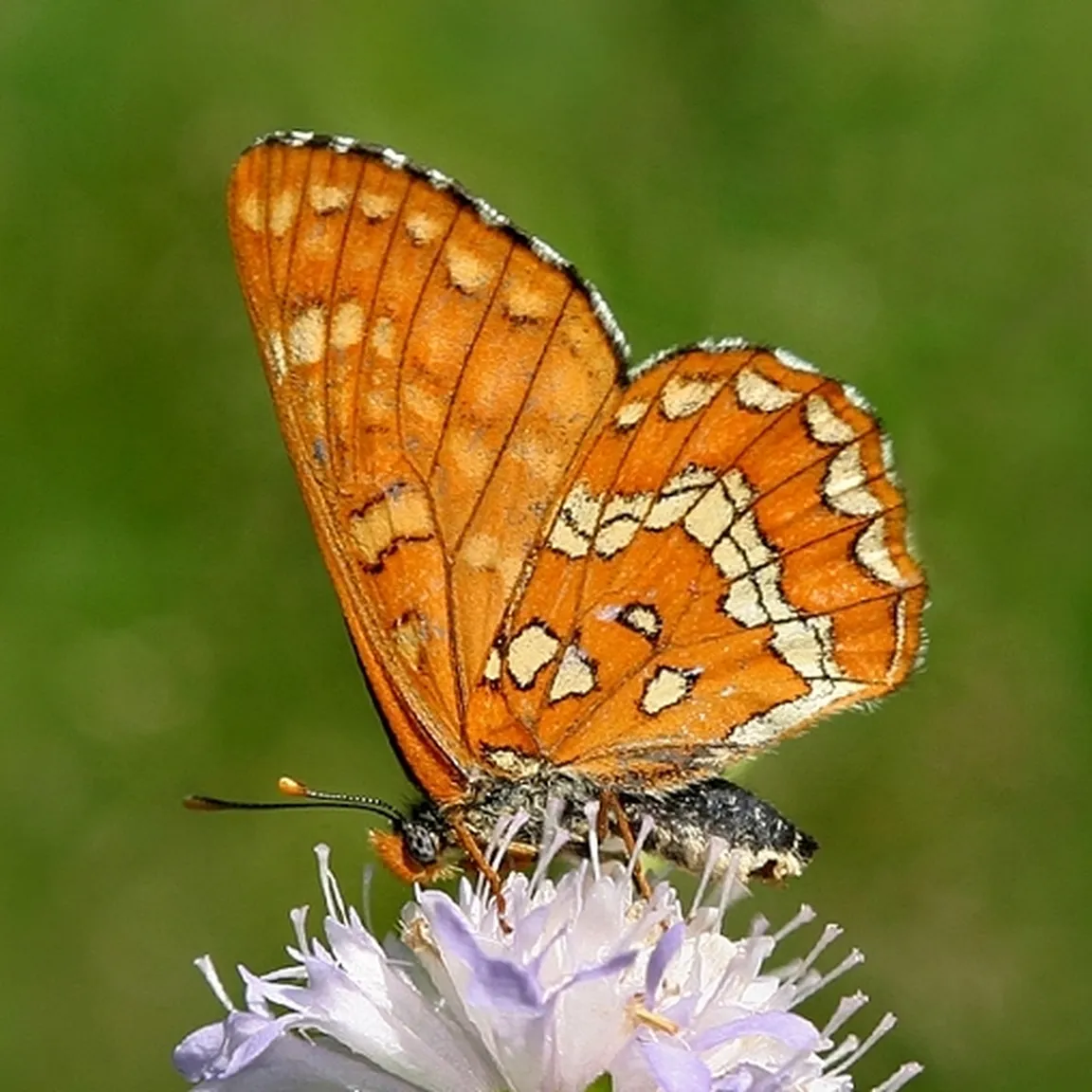Wingspan: 40–45 mm
Flight period: in one generation from May to early July
Larval host plants: initially the European ash (Fraxinus excelsior) and the quaking aspen (Populus tremula); later in larval development also herbs, for example species from the genera Plantago (Plantago) and Veronica (Veronica)
The forest checkerspot (Euphydryas maturna) lives on forest clearings and along paths, usually in damp valleys overgrown with mixed forest, where young stands of European ash and aspen thrive. It prefers lush shrub vegetation, as adults most enjoy nectar from shrubs such as viburnum and buckthorn. For development from larva to adult butterfly two seasons are required. In the first year, young caterpillars live and feed in groups in a shelter of a silky web they spin. In autumn they fall to the ground together with the leaves, where they overwinter. In spring each goes its own way and searches for Plantago and Veronica on which it feeds until it pupates.
The forest checkerspot is a rare butterfly, which occurs mainly in very localized areas. It is primarily threatened by clear-cutting and changes to its habitat due to agricultural needs. As its habitat is reduced, its populations decline, which is why it is listed on the Red List of endangered butterflies in our country and is also protected. The forest checkerspot is also a qualifying species for the designation of Natura 2000 sites.
The upper side of its wings is dark brown with brownish-red bands of spots. Some of the spots on the upperside of the wings are, especially in males, lighter – cream-colored. The underside of the wings is brick-red, on the hindwings there is a distinctly arranged cream-colored band of spots and a few smaller spots closer to the body.


